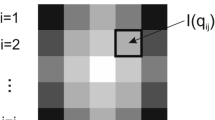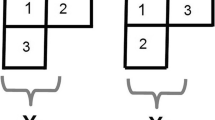Abstract
PREVIOUS work1,2 on this topic led to methods and formulae applicable to three-dimensional summation, and it was obviously desirable to extend this to the more limited (and usual) two- and one-dimensional cases. This has now been done, and in a paper, to appear in full elsewhere, I have obtained general results valid for the more simple types of series.
This is a preview of subscription content, access via your institution
Access options
Subscribe to this journal
Receive 51 print issues and online access
$199.00 per year
only $3.90 per issue
Buy this article
- Purchase on Springer Link
- Instant access to full article PDF
Prices may be subject to local taxes which are calculated during checkout
Similar content being viewed by others
References
Booth, Nature, 156, 51 (1945).
Booth, Proc. Roy. Soc, in the press.
Bragg and West, Phil. Mag., 10, 823 (1930).
van Reigen, Physica, 9, 461 (1942).
Author information
Authors and Affiliations
Rights and permissions
About this article
Cite this article
BOOTH, A. Accuracy of Atomic Co-ordinates Derived from X-ray Data. Nature 157, 517–518 (1946). https://doi.org/10.1038/157517c0
Issue Date:
DOI: https://doi.org/10.1038/157517c0
Comments
By submitting a comment you agree to abide by our Terms and Community Guidelines. If you find something abusive or that does not comply with our terms or guidelines please flag it as inappropriate.



